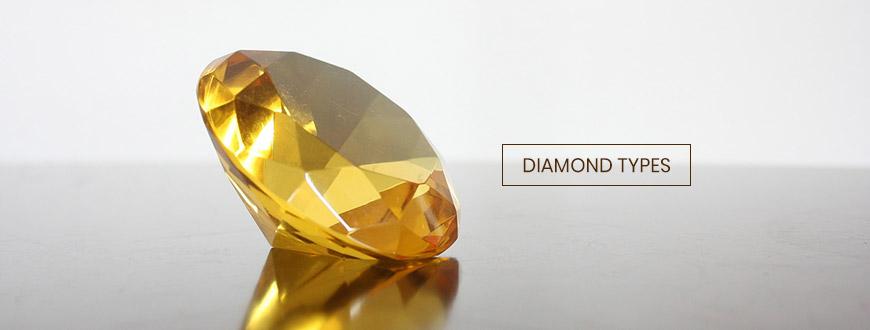Kalyan Wiki

Diamond Types
There are mainly three types of diamonds that are easy to understand for amateurs. These are;
Natural Diamonds : As the name suggests, these are the ones that form without any human intervention. The Earth takes millions of years to create these shiny rocks. They are mostly colourless. However various hues of blue, purple, yellow, pink and even black coloured natural diamonds are available in limited numbers.
Synthetic Diamonds : These are diamonds made by humans in a laboratory. Technological developments have made it easy to grow human-made diamonds at relatively lower prices.
Treated Diamonds : The natural diamonds that are artificially enhanced to accentuate the looks are treated diamonds. For example, some cracks in natural diamonds can be covered by filling them, or the natural color of diamonds can be enhanced by treating them. However, the treated version of a natural diamond is rated way lower than the non treated ones.
Diamond types can also be determined based on their chemical composition; for all of those interested in understanding the anatomy of the big rock, read on.
Diamonds are broadly classified into two sections i.e.type I and type II. These further break down into a few more parts.
Type I - This is the most common diamond type. It contains nitrogen atoms that create impurities in the rock. These nitrogen atoms help determine the colour of a diamond. This diamond type is further disintegrated into types Ia and Ib.
- Type Ia: Almost 95% of natural diamonds are categorized as type Ia. In these diamonds, the nitrogen impurity amounts to 0.3% that is clustered in the form of carbon lattice. Such a composition makes the diamond more prone to absorbing blue light and thus appears pale yellow.
- Type Ib: Here the nitrogen impurity increases to 0.5%. This makes the diamond more prone to absorbing green light along with blue that leads to the formation of intense yellow or brownish hues.
Type II : Nitrogen impurities in Type II of diamonds are beyond measures. They form when the rock is under immense pressure for a substantial amount of time. Most of the large and irregularly shaped diamonds fall under this category. Here too there are 2 sub-categories-
- Type IIa: Almost 1-2% of natural diamonds are type IIa category. They are devoid of impurities and almost colourless. The extravagantly famous ones in this category are the Koh-i-Noor, the Cullinan and Lesedi la Rona.
- Type IIb: These form 0.1% of natural diamonds. Hence they are the rarest and may cost a fortune. They have boron impurities that lead to the absorption of red, orange and yellow light. This lends the diamond a blue or grey colour.
Diamonds are much more than a sparkling piece of rock. The chemical composition that leads to its colour is worth every effort you take to own this precious rock.







